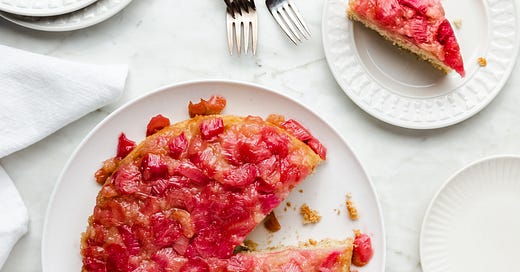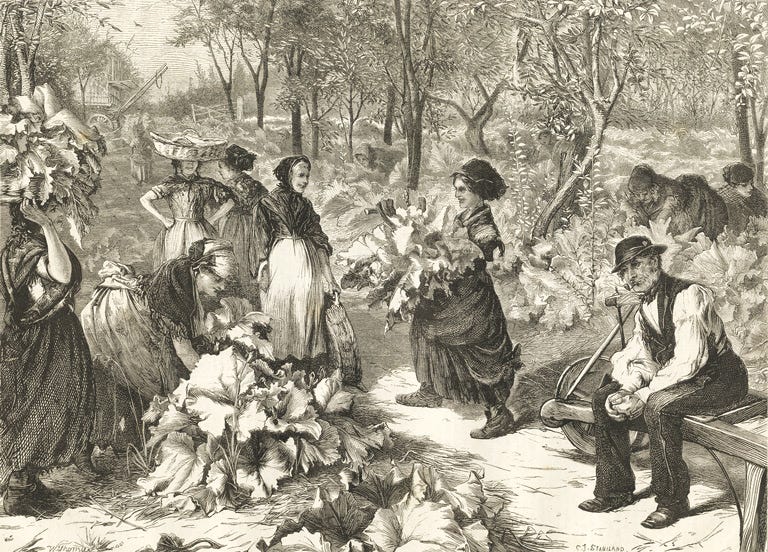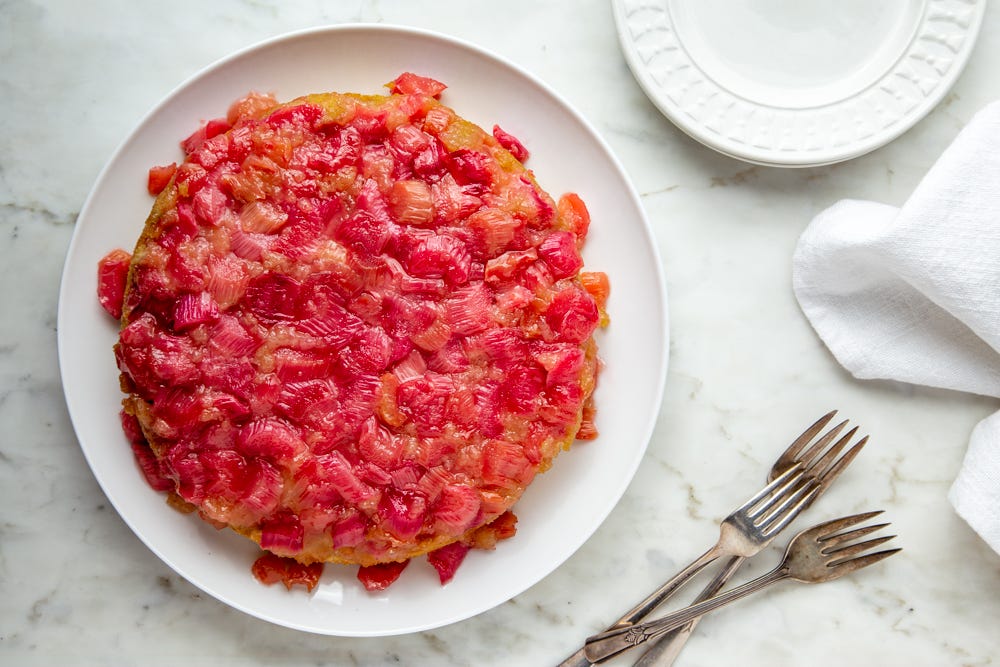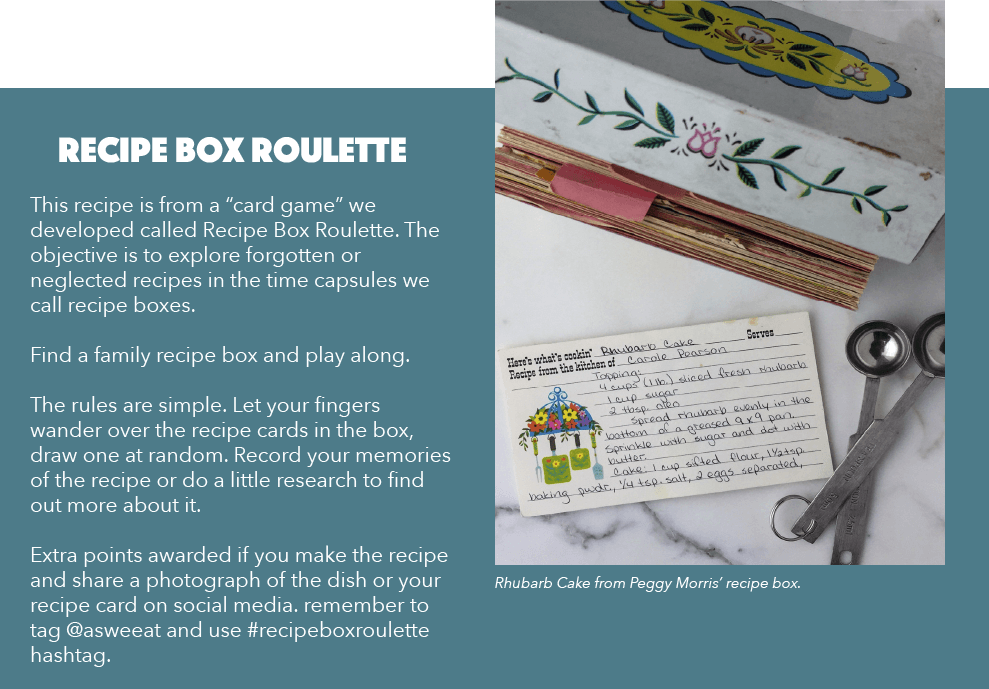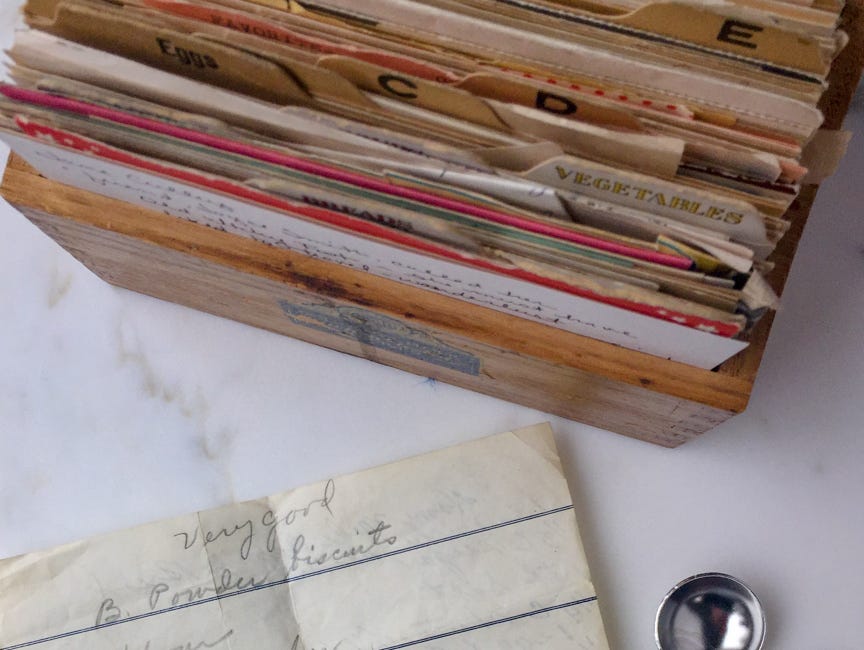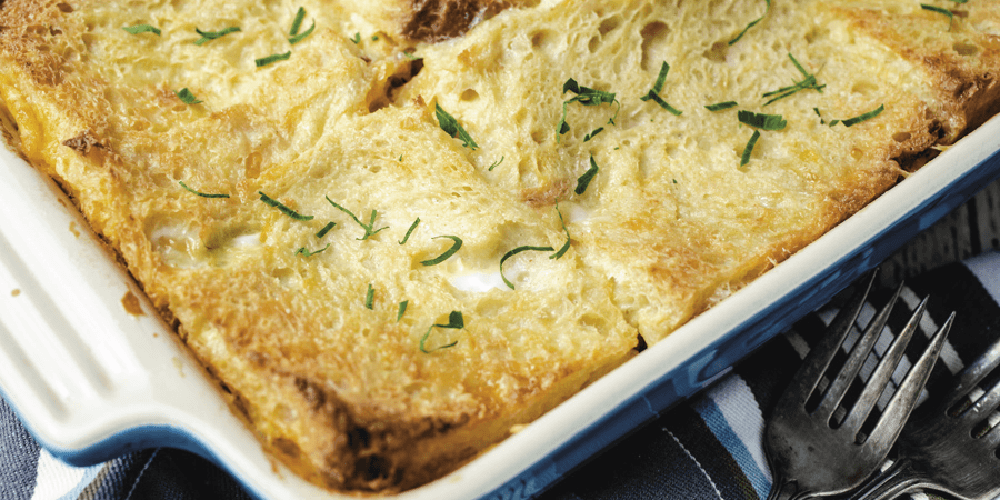This article is part of the Recipe Box Roulette series, a "card game" crafted to pay homage to the curators of long-forgotten or overlooked recipe boxes and breathe new life into their treasured dishes.
Recipes: A Culinary Diary
There is a unique joy that comes as I run my fingers over the weathered recipe cards carefully tucked in the painted tin and wooden boxes in my collection. The cards, stained, creased, and yellowed, whisper tales of tradition, friendship, and nostalgia, inviting me to journey to the kitchen tables of the curators and contributors.
As I thumbed through Peggy’s recipe box, each card felt like a page from her culinary diary, a witness to her creativity, her expertise, and her love of nurturing those around her. My fingers stop, pull at the card beneath them - Rhubarb Cake shared with Peggy by Carole Pearson.
I’ve never met Peggy. I’ve never met Carole. But as I read through the card, I recognized a kinship, a connection between these two women.
Each time I make a recipe for Recipe Box Roulette it’s like taking culinary journey with a new friend. With each step in the recipe, I couldn't help but wonder about Carole—her life, her passions, and the stories behind this recipe that she graciously shared with Peggy. In a world where culinary fads and viral recipes dominate the digital realm, Carole’s Rhubarb Cake stands as a timeless testament to the enduring power of tradition and the unspoken bond between women united by friendship and a shared love of good food.
A Fruit (Actually a Veggie) of Heritage and Tradition
Reflecting on the recipe, I couldn't help but ponder the rich history of rhubarb—a plant deeply ingrained in culinary traditions across continents.
It’s native to southwestern Russia, southern Siberia, and China and made its way to England in the 17th century when an English botanist received seeds from Italy. Cultivation spread throughout Britain in the 18th century but it wasn’t until a variety developed for the coronation of Queen Victoria aptly called “Victoria” was introduced that it really took off. The stalks were much sweeter and more tender than its predecessors and, of course, if it was good enough for a queen…
Introduced to America by a Maine gardener this hardy, easy-to-grow plant flourished. Pioneers traveling west, dug up rhubarb roots, carefully wrapping them in burlap to bring on the long journey to a new life. I suppose that the rhubarb not only provided some sustenance, but was a reminder of the more tame world left behind.
Although this plant is technically a vegetable, it is used more often as a fruit. So much so that in 1947 a US court in Buffalo, New York ruled that it should be considered a fruit.

Making Carole’s Rhubarb Cake
Reading through Carole’s recipe, I realized that what I was going to make was a Rhubarb Upside Down Cake.
As with any upside down dessert, you start by layering what will be on the top on the bottom. So the sliced rhubarb goes in along with the requisite sweetener, in this case, white sugar, and a little bit a butter to make the wonderful, sweet glaze.
It seems like it would be just as easy to mix the rhubarb with the sugar and then pour melted butter over and mix it in. But there is something sacred about the process that the maker has meticulously documented. I feel like making a wholesale change like that is sacrilegious. So I followed Carole’s instructions as written.
The cake batter is made using the sponge method with a little bit of a twist. Once the eggs and sugar are beaten together, warm water (that’s the twist) is added to the mixture and beaten until it’s light and foamy.
Aside: I actually asked my friend, Jenni Field of Pastry Chef Online, if she had any ideas about the warm water. She thought that it was likely to ensure that the sugar fully dissolves, creating a finer texture. Thanks, Jenni!
The dry ingredients are then stirred in, including an addition by Carole that I really like - wheat germ. It adds this nice little bit of texture to the light sponge cake.
Another aside: Many of the recipes in Peggy’s recipe box appear to be from the 60’s and 70’s when health foods were getting another foothold here in the States.
The last step is to beat the egg whites until they form stiff peaks and fold them into the egg yolk mixture.
The batter is poured over the rhubarb in the cake pan and baked until done about 50 minutes. I like to rotate my cake 1/2 way through the cooking time because I have a hot spot toward the back of my oven.
Once a toothpick or cake tester comes out clean, cool the cake on a cooling rack for about 15 minutes. Don’t let it cool completely or it will stick - sad 🙁. Place a serving plate over the cake pan and turn the pan and plate over at the same time.
In the hustle and bustle of modern life, it's easy to forget the women who paved the way for us in the kitchen. But as you savor the flavors of Carole’s Rhubarb Cake, take a moment to pause and reflect on the countless women whose culinary prowess continues to inspire and delight us. May their recipes live on, cherished and shared for generations to come.
Carole’s Rhubarb Cake
Serves: (12) • Prep: (15 minutes) • Cook Time: (50 minutes)
In the hustle and bustle of modern life, it's easy to forget the women who paved the way for us in the kitchen. As we savor the flavors of Carole’s Rhubarb Cake, let’s take a moment to pause and reflect on the countless women whose culinary prowess continues to inspire and delight us. May their recipes live on, cherished and shared for generations to come.
Ingredients
Topping
4 cups sliced fresh rhubarb, about (1 pound)
1 cup sugar
2 tablespoons butter cut into small cubes
Cake
1 cup sifted flour
1 1/2 teaspoon baking powder
1/4 teaspoon salt
2 eggs separated
1 cup sugar
1/2 cup hot water
1/2 cup wheat bran
1 teaspoon vanilla
Method
Heat the oven to 350˚F.
Spread the sliced rhubarb over the bottom of an 8" cake pan, sprinkle with the sugar and dot the butter and set aside.
Sift together the flour, baking powder, and salt.
Add the egg yolks to the bowl of a stand mixer. You can also use a hand mixer if you prefer. Fit the whisk attachment to the mixer, and mix the egg yolks on low until combined.
With the mixer on medium speed, gradually add in the sugar. Increase the speed to high and beat until the mixture is light in color, 4 - 5 minutes.
With the mixer on low speed, add the hot water slowly, beating well. When you lift the whisk out of the egg yolk mixture, the mixture should fall in a ribbon pattern.
Stir in the bran and vanilla then add the flour mixture and mix.
Transfer the yolk mixture to a large wide bowl.
Add the egg whites to the clean bowl of your electric mixer. Beat egg whites on medium-high until frothy. Increase speed to high and beat until the eggs are glossy and form stiff peaks, about 4 minutes.
Remove 1 cup of the egg whites and vigorously fold into the batter. Gently fold in the remaining egg whites, running a rubber spatula down along the bottom of the bowl and lifting up through the center and over the top as you rotate bowl.
Pour the batter over the top of the rhubarb and bake in the center of the oven for 50 minutes or until the top of the cake is firm to the touch and a toothpick or cake tester stuck in the middle comes out clean.
Place the cake on a cooling rack, and cool for 15 minutes. Run a knife around the edge of the pan, place a plate over the pan and turn it upside-down. If the cake cools completely, it will stick to the pan.
Notes
One reader asked about using a springform pan, which I advised against. The delicious caramel juices will seep out making the upside-downness less fabulous and you will have a mess to clean up.
More Recipe Box Roulette Articles
RECIPE BOX ROULETTE: Lois' Baked Cheese Sandwiches
This article is part of the Recipe Box Roulette series, an innovative "card game" crafted to pay homage to the curators of long-forgotten or overlooked recipe boxes and to breathe new life into their treasured dishes. The rules are simple, grab a recipe box, draw a card, and embark on a culinary journey that transcends time and generations.
Let’s Stay Connected
Follow us on Instagram @asweeat,
Join our Family Recipes, Traditions, and Food Lore community on Facebook
Subscribe to the As We Eat Journal
Listen to the As We Eat Podcast
Do you have a great idea 💡 for a show topic, a recipe 🥘 that you want to share, or just say “hi”👋🏻? Send us an email at connect@asweeat.com
Looking for a unique gift idea for a birthday, anniversary, holiday, host or hostess, or just because? Consider giving a subscription to the As We Eat Journal.


